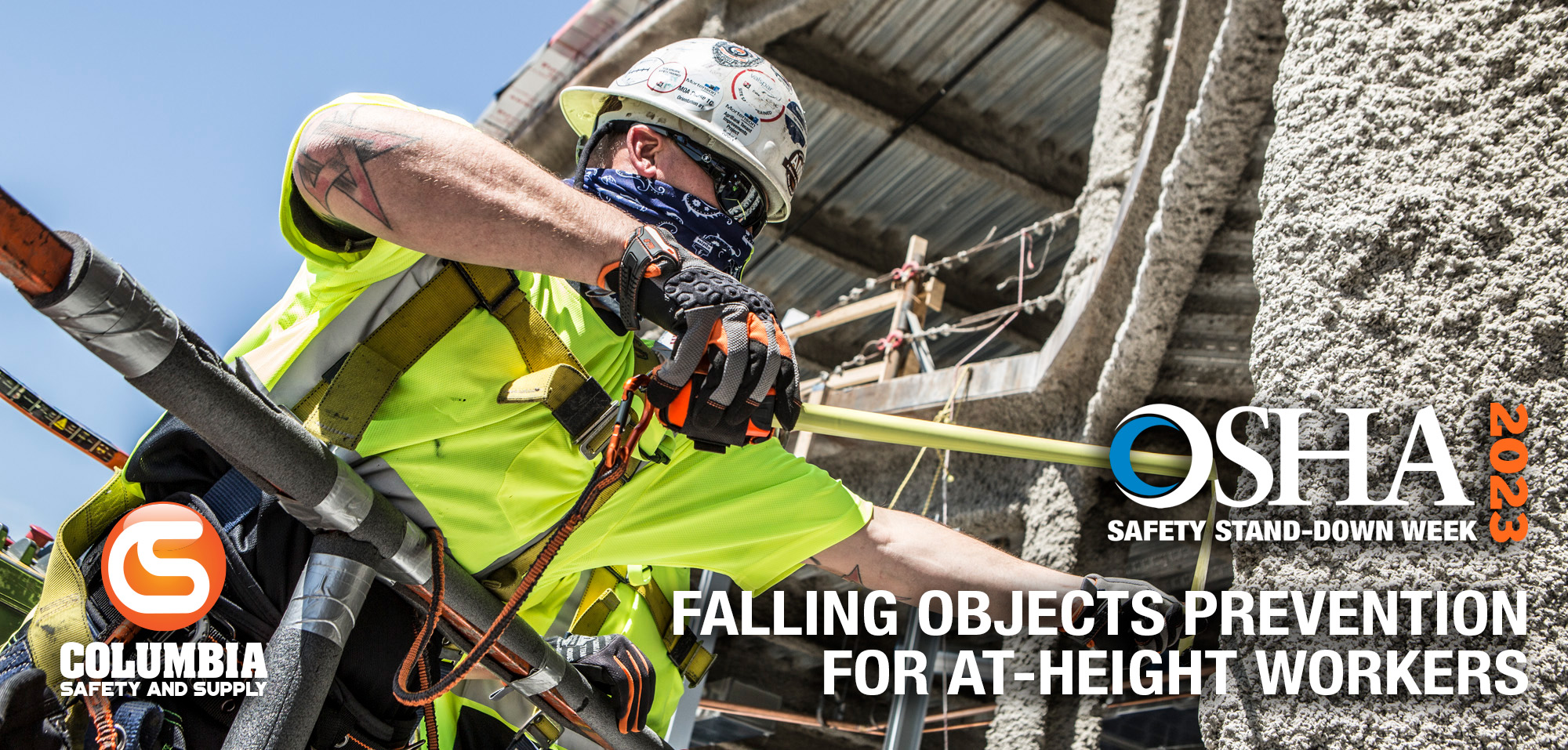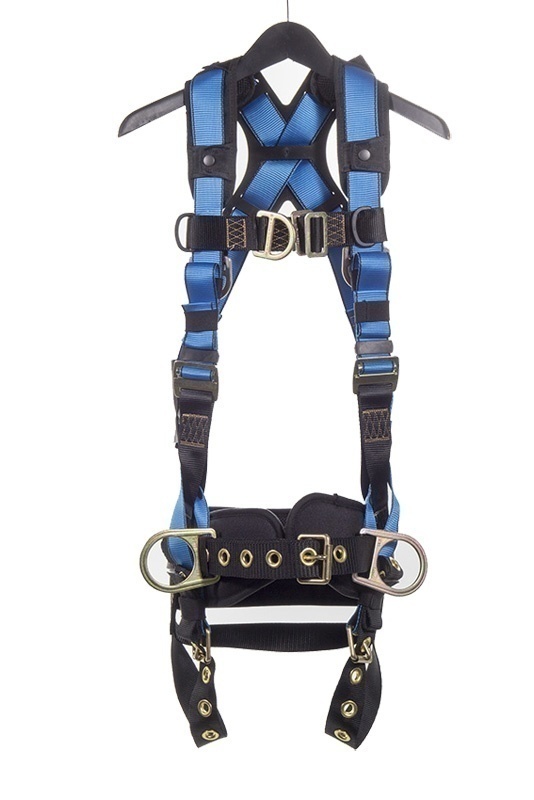YOU HAVE NO ITEMS IN YOUR CART.
Featured Manufacturers
Columbia Safety and Supply Safety Stand-Down Week 2023: Now Entering the No Drop Zone
Day Two
Fall Protection for Tools

Dropped tools can really be a drag on the job site. From a minor inconvenience and lost time to seriously injuring a crew member, dropped tools are no fun. But, just like with human fall protection, having the right equipment, knowledge, and training is the secret to preventing dropped objects.
Tips for preventing dropped objects on the jobsite
We're all human - and sometimes we are going to drop things - here's some tips to help prevent dropped objects from causing injury or lost work time.
- Use tool tethers to prevent tools from falling.
- Keep all material at least 3 feet from a leading edge, other than material specifically required for work in process.
- Remove items from all loose or unsealed pockets, especially top shirt pockets, such as phones, pens, and tools.
- Do not hang objects over guardrails.
- Ensure toe boards are in place and inspected frequently.
- Require hard hats and other required personal protective equipment (PPE) for every person in areas at risk for falling objects—no exceptions.
- Rope off the area, if possible, where fall or drop hazards may exist.
- Inspect all PPE prior to use to confirm it still meets manufacturers’ recommendations.
- Communicate often. Work as a team to avoid complacency and always remain vigilant of these procedures.
Dropped Object Statistics
OSHA estimates that over 50,000 “struck-by a falling object” incidents occur each year on construction sites alone. Anytime there are overhead hazards present on a job site, hardhats need to be worn. PPE is always the last line of defense. Wearing a hardhat will only limit the damage a dropped object does, not prevent it from happening. Rely on eliminating the hazard or installing engineering controls to reduce the chance of objects striking ground personnel instead of PPE to lessen the blow.
ISEA/ANSI 121
Dropped object prevention - often referred to as fall protection for tools is outlined in the ISEA/ANSI 121 Dropped Objects Prevention Standard. This standard outlines the safety standards and requirements for testing at-height tool tethering equipment with the goal of increasing safety and job site efficiency.
Tool Tethers
Dropped object prevention equipment has been around long before the standard was in place, but since the standard was created, some things have changed. Previously, they were referred to as tool lanyards, however, industries have adopted the name tool tethers instead to prevent confusion between tool drop prevention equipment and shock absorbing lanyards.
How Tool Tethers Work
Tool tethers help prevent injury, damage to expensive equipment or tools, and lost productivity. Believe it or not, dropped objects are still a huge cause of injury and even death in the United States. Tool tethers have a range of connection points. Almost all the tethers we offer feature a carabiner for connection to your harness or bolt bag. The carabiners are available in single and double-action configurations. Tool tethers have a variety of different weight capacities ranging from 1 to 15 pounds and weight capacity is based on the weight of the tool.
Connecting the tool tether to the tool itself can be done in a few different ways. If the tool has a tether connection built-in, then you are good to go. Simply attach the connection point of the tether to the tool and you’re in business. If you find yourself in a situation where the tool does not have a tether point, there are solutions available. Some options include:
- Self-Adhering Tape – This is a tape that has been designed to adhere a connection point to your tool.
- Tool Traps – This is a “holster” that your tool can fit in that provides the connection point and can stay on the tool while it's being used. It is most common to find this for measuring tapes and power tools.
- Tool Collars – These are components that help retrofit a range of tools with a connection point without hindering the ability to use the handle of the tool.
Tool tethers come in a range of lengths that not only provide easier use when working but also provide added force reduction in the event of a drop. Another option, if you need to be able to adjust the length, is to use a retractable tether. Think of retractable tethers as mini SRLs for your tools. It functions in much the same way.
We know what you're thinking! Having 15 different tethers for your tools is going to add a lot of weight and be inconvenient. But don’t worry, we’ve got you covered there too. There are many tool tethers that have a modular construction. Essentially there is a clip below the shock absorbing portion of the tether that can be swapped out. So, instead of having a tether for each tool you can simply have a connection point and tether loop on each of your tools that can be easily switched out.
Questions or Need More Info?
If you have any questions regarding the above information or need more insight into safety or fall protection in general, reach out to our Gear Experts®! Click here to contact our team, or use the instant chat feature in the lower right hand corner of your browser screen. Also be sure to connect with us on social media to keep up with all of our latest content.














